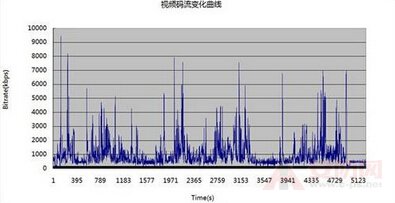definition
The data rate refers to the data traffic used by the video file in unit time, also called the code rate, and is the most important part of the picture quality control in video coding. At the same resolution, the larger the code stream of the video file, the smaller the compression ratio and the better the picture quality.
principle
In general, the code stream of a DVD format song is 6~8M; the code stream of a VCD song is about 1.5M. In the same configuration and the same network environment, the concurrent streams of DVD songs and VCD songs are different.
The video bit rate and the code stream are just the same problem. For example, an MPEG2 video file generally contains not only video information but also audio information. The audio also has its own bit rate. This is a file in which audio and video information is combined. The code stream of a file is the sum of its audio and video streams.

Bit rate
The rate at which a digital channel transmits a digital signal is called the data transmission rate or bit rate.
The word bit rate has various translations, such as code rate, etc., which means that the encoded (compressed) audio data is represented by how many bits per second, and the bit is the smallest unit in the binary, either 0 or 1. The relationship between bit rate and audio and video compression is simply that the higher the bit rate, the better the quality of the audio and video, but the larger the encoded file; if the bit rate is less, the situation is just the opposite.
For example: encode audio and video at 500Kbps.
1KB/sec 1024*8bps,
b is the bit (bit)
s is the second (second)
p is per (per)
Therefore, encoding at 500 kbps means that the encoded audio and video data needs to be represented by 500K bits per second.
Specifically, for audio, the code stream sampling rate × the number of bits × channel, therefore, for a common CD format audio, its code stream is 44100 × 16 × 21.41 Mbit / sec, that is, the file size of one second is 0.17625M, and the common 160Kbps Mp3 file needs 160K/1020/80.01953125M per second, which is nearly 10 times different.
Multi-stream
Multi-streaming technology is a solution that automatically generates relatively optimal decoding quality according to the actual network bandwidth conditions of the user by simultaneously generating a plurality of streaming streams of different code streams and resolutions in the encoding process. In the actual webcast application, because the network environment of the visitors located in different network locations is different, the live broadcast streaming media transmission with only a certain fixed stream resolution often results in the paintings seen by users with higher network speeds. The quality is still not clear enough. The user with low network speed has a long decoding time and the picture is not smooth enough. In order to solve the contradiction between the two, the visitor browses to see the clear and smooth live content as much as possible, and adopts multi-stream technology to become One of the simplest and most effective ways.
kaiping aida sanitary ware technology co.,ltd , https://www.kpfaucets.com